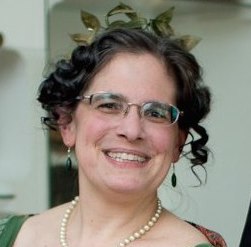I didn’t realize my way of teaching heys for three was particularly unusual until one of my regular musicians, who is himself a contra dance caller, commented on it, impressed by how quickly I was able to get a roomful of dancers at a public ball (meaning dancers of wildly mixed ability and experience) doing heys in unison. Since heys of one sort or another are especially popular in early nineteenth century dance, I teach them frequently and prefer not to take too much time about it, especially when calling at a ball.
My little trick for teaching a hey for three is to start by teaching it from an L-shaped formation, as a “corner hey”, rather than in a straight line. I find that it can be difficult for dancers, especially beginners, to visualize the figure-eight path of the hey when they all start in a straight line, and that it is not intuitively obvious in which direction the second and third dancers move when everyone starts at once (as they should!) rather than one dancer moving and the other two waiting out a measure or two before starting.
Doing a corner hey simplifies things.
